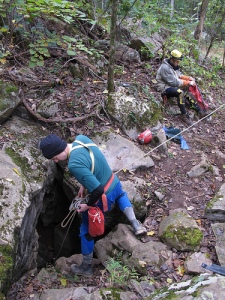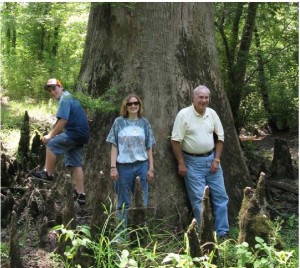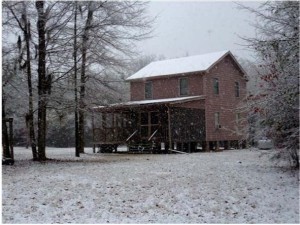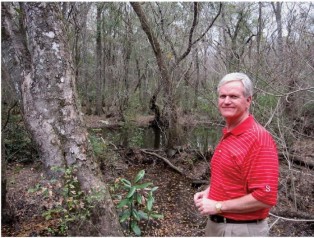The Georgia-Alabama Land Trust announces the signing of a conservation easement with Stuckey Timberland that will create a 2,194 acre tract in Twiggs County, Georgia.
Known as Bear Creek Reserve, the property is located in the heart of the black bear habitat in central Georgia and is home to the highest concentration of black bears per acre in Georgia.
The University of Georgia’s Warnell School of Forestry and Natural Resources and the Georgia Department of Natural Resources conduct ongoing studies of the bear population at Bear Creek.
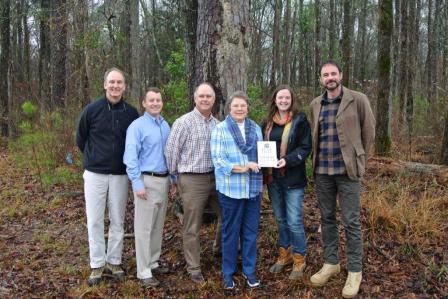
Russell Franklin,III, Mike Harrell, Wade Hall, Lynda Stuckey Franklin, Kat Nelson, with the Land Trust, and Jay W. Gould-Stuckey
While retaining timber management rights on the upland portions of the tract, Stuckey Timberland’s grant of a conservation easement perpetually preserves the expansive hardwood bottom lands and the standing hardwood trees which are critical to the bear population. Additionally, the easement protects the upland areas from future development.
Based in Eastman, Georgia, Stuckey Timberland is owned by the W. S. Stuckey family. Second generation family members W. S. (Bill) Stuckey, Jr. and Lynda Stuckey Franklin and Stuckey Timberland President and CEO Wade Hall presented the easement to the Georgia-Alabama Land Trust today during a ceremony on the property. Kat Nelson, Director of Land Protection for the Land Trust, accepted the easement on behalf of the Land Trust.
“We are excited to be able to protect this very special property from development and to preserve the habitat of the black bear population,” said Lynda Stuckey Franklin. “This is a great testimony to the stewardship which our family wishes to exercise in forestland management; a legacy which was passed to us by my father. We hope to pass that legacy on to the next generations of our family.”
Katherine Eddins, Executive Director of the Land Trust said, “This is our first conservation easement protecting significant bear habitat. Thank you to Stuckey Timberland for protecting this unique and precious resource.”
Stuckey Timberland and the Stuckey family have a legacy of excellent stewardship of the land, insisting on the use of forest industry best management practices and sound silvicultural science in the management of the forest lands owned by the family. Further, they have supported the conservation of critical wildlife habitat and environmentally sensitive properties. As a member of Congress representing coastal and central Georgia counties from 1967 through 1977, Bill Stuckey sponsored the legislation which created the Cumberland Island National Seashore and the Okefenokee Swamp Wilderness Area.

